How to Decide Between a 15-Year or 30-Year Mortgage
Quick Mortgage Quote
We will get back to you as soon as possible.
Please try again later.
How to Decide Between a 15-Year or 30-Year Mortgage

When it comes to buying a home, one of the biggest decisions you'll make is choosing between a 15-year and 30-year mortgage. Both options have their pros and cons, and it's important to carefully weigh them before making a decision.
A 15-year mortgage offers the benefit of paying off your loan in half the time, saving you a significant amount of money on interest over the life of the loan. However, the monthly payments are higher. On the other hand, a 30-year mortgage provides lower monthly payments, making it more affordable for many homebuyers. It also offers flexibility, as you can always make additional payments to pay off your loan sooner. But — you'll end up paying more in interest over the life of the loan.
Ultimately, the decision depends on your financial situation, long-term goals, and personal preferences. In this article, we'll explore the factors to consider when deciding between a
15-year or 30-year mortgage, helping you make an informed choice.
Understanding the difference between a 15-year and 30-year mortgage
As the names suggest, a 15-year and a 30-year mortgage differ primarily in the length of time you have to repay the loan. However, this difference in term length also impacts the interest rate, monthly payment amount, and the total interest you'll pay over the life of the loan.
Interest Rate: Typically, lenders offer a lower interest rate for a 15-year mortgage compared to a 30-year mortgage. Lenders take on less risk with shorter loans, which are repaid faster.
Monthly Payment: With a 15-year mortgage, since the loan amount is spread over a shorter period, monthly payments are generally higher than those of a 30-year mortgage. Conversely, spreading the loan amount over 30 years results in lower monthly payments.
Total Interest Paid: Over the life of a 15-year mortgage, you will typically pay less in total interest than you would with a 30-year loan. This is due to the shorter term and the lower interest rate. While monthly payments for a 15-year mortgage are higher, the faster repayment and lower rate mean the total interest you pay to the lender is reduced.
In simple terms, with a 15-year mortgage, you agree to higher monthly payments, but you will own your home outright in half the time and save money on interest. In contrast, a 30-year mortgage gives you more time to repay, resulting in lower monthly payments, but you'll end up paying more in interest over the life of the loan. Hopefully, this helped you feel more confident if you’re
planning to buy a home sometime in the near future.
Next, let's look further into each option's specific advantages and disadvantages.
Pros and Cons of a 15-Year Mortgage
Pros:
- Quicker Path to Ownership: One of the most significant advantages of a 15-year mortgage is that you can own your home outright in just 15 years, giving you the peace of mind that comes with being mortgage-free.
- Less Interest Over Time: Due to the shorter term and typically lower interest rates, you’ll save considerably on interest payments compared to a 30-year loan. This could be a big difference maker during times like these, where interest rates have been consistently on the rise.
- Build Equity Faster: Because a more significant portion of your monthly payment goes toward the principal with a 15-year loan, you will build home equity quicker.
- Long-term Financial Savings: Over the life of the loan, you will likely save tens of thousands, if not more, by opting for a 15-year mortgage.
Cons:
- Higher Monthly Payments: The most obvious downside is the steeper monthly payments, which can strain your budget, especially if unexpected expenses arise.
- Less Flexibility: Committing to higher monthly payments can limit your cash flow for other investments, savings, or expenditures.
- Qualification Challenges: Due to the higher monthly payments, you might face stricter lending requirements or find it slightly more challenging to qualify for a larger loan amount.
Pros and Cons of a 30-Year Mortgage
Pros:
- Lower Monthly Payments: This is the most apparent advantage, allowing homeowners to manage their monthly budgets more comfortably.
- Greater Flexibility: With lower mandatory monthly payments, homeowners can invest elsewhere, save, or manage unexpected costs.
- Potential for Extra Payments: If you’re disciplined, you can make additional payments towards your principal whenever your finances allow, effectively reducing your interest and potentially shortening the term of your loan.
- Higher Borrowing Potential: With the lower monthly payment criteria, you might qualify for a more substantial loan amount, which can be beneficial if you’re eyeing a pricier property.
Cons:
- More Interest Over Time: The longer term and typically higher interest rate mean you’ll pay considerably more in interest over the life of the loan.
- Slower Equity Build-Up: Building equity in your home takes longer because a smaller portion of the monthly payment goes toward the loan's principal in the early years.
- Longer Commitment: Being in debt for 30 years can be daunting for some people, and you’ll have the mortgage hanging over you for a more extended period.
Maggie's Top 5 Tips for Preparing for and Managing a 15-Year or 30-Year Mortgage
Selecting the right mortgage can seem daunting, but you can confidently navigate this pivotal financial decision with the right approach.
Here are
our team’s top five tips to get you on the right path:
Thoroughly Analyze Your Budget: Before you even step into a lender's office, clearly understand what you can afford each month. Remember to account for other costs associated with homeownership, like insurance, taxes, and maintenance. Your mortgage payment should fit comfortably within your monthly budget, allowing room for additional expenses and unexpected costs.
Build a Robust Emergency Fund: Life is full of surprises, some of which can be costly. Ensure you have an emergency fund to cover at least three to six months of expenses. This safety net will give you peace of mind, knowing you can cover your mortgage payments if unexpected financial challenges arise.
Stay Updated on Current Market Rates: The mortgage industry sees frequent fluctuations. Keeping an eye on current interest rates can offer opportunities, especially if there's potential for
refinancing and securing a better rate in the future.
Consider Making Extra Payments: If you go for a 30-year mortgage but aspire to pay it off sooner, consider making additional payments when possible. These payments can be monthly, quarterly, or even yearly. They'll significantly reduce your interest and could shave years off your mortgage.
Consult with a Mortgage Specialist: Your mortgage journey doesn't have to be solo. Lean on experts like Maggie, who can provide tailored advice and insights about your financial situation. They can guide you on the pros and cons of each mortgage type, help you map out a strategy for future financial success, and
streamline your application process.
Two Additional Factors to Consider
1. As of October 2023, lenders are increasing their conforming loan limits up to $750,000 in anticipation of the new loan limits that will be released next month.
2. Fannie Mae changed their conventional guidelines for the minimum down payment for a primary residence with up to four units. Previously, if you were purchasing a two-unit property with a traditional 15 or 30-year loan, you would need a minimum of 10% down. If purchasing a 3-4 unit, you would have to put 25% down. Now, Fannie Mae has adjusted their policy to allow for 5% down payments on any property with 2-4 units, saving a tremendous amount of out-of-pocket expenses for a multifamily purchase.
With these top tips in mind, you'll be well-equipped to make an informed mortgage decision that aligns with your financial goals and lifestyle needs.
Making Your Mortgage Work for You
Choosing between a 15-year and a 30-year mortgage is a monumental decision that will shape your financial journey for years. It's crucial to balance your present needs with future aspirations, ensuring that your choice fits comfortably within your current budget and aligns with your long-term financial goals.
Need further assistance? That’s what we’re here for. Reach out and
schedule a consultation with Maggie.
What our customers are saying:
Share this post:

Start your Mortgage Journey
We are committed to helping you reach your goals.
Start your Mortgage Journey
We are committed to helping you reach your goals.
LOAN OPTIONS
CONTACT US
Maggie Levin 120 McFaul Way Zephyr Cove, NV 89448
NMLS #1762959
Maggie Levin | All Rights Reserved.





